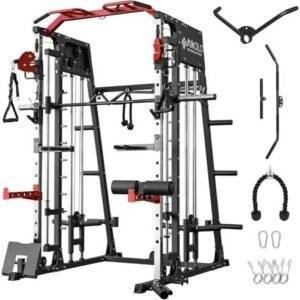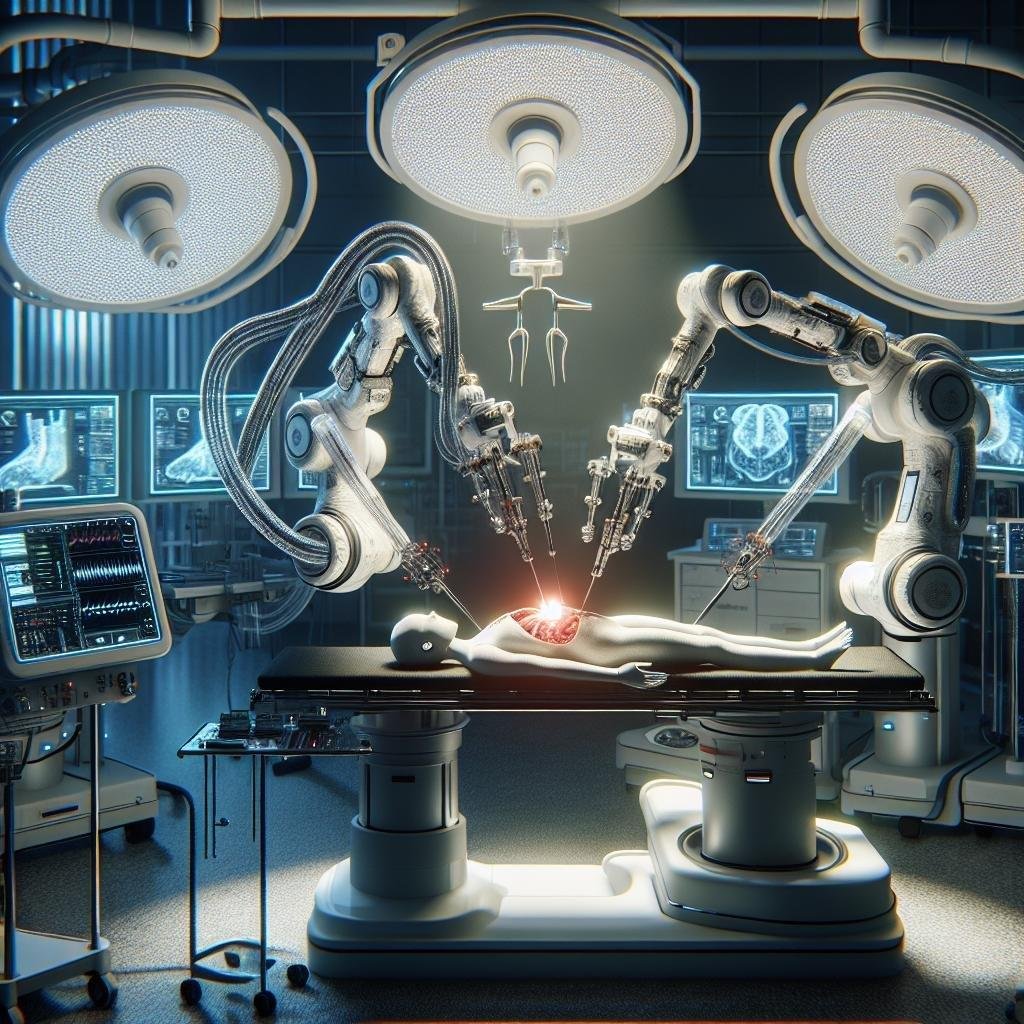Introduction
The domain of surgical practice is undergoing a profound transformation, driven by significant advancements in robotics technology. With the integration of sophisticated robotic systems into operating rooms, surgeons are now equipped with enhanced precision, dexterity, and visualization capabilities that were once unimaginable. These innovations are not merely incremental improvements; they represent a paradigm shift that is reshaping the landscape of minimally invasive procedures, improving patient outcomes, and optimizing operational efficiencies. This article delves into the latest developments in robotic surgical systems, exploring their applications across various specialties, the underlying technologies that facilitate their functionality, and the future prospects of robotic surgery in enhancing healthcare delivery. As we advance further into the 21st century, the convergence of robotics and medicine heralds a new era of surgical excellence, offering unprecedented opportunities for innovation and improvement in patient care.
Table of Contents
- Emerging Robotic Technologies Enhancing Precision in Surgical Procedures
- Integration of Artificial Intelligence in Surgical Robotics for Improved Outcomes
- Challenges and Solutions in the Adoption of Robotic Systems in Operating Rooms
- Future Directions in Robotic Surgery: Advancements and Ethical Considerations
- Concluding Remarks
Emerging Robotic Technologies Enhancing Precision in Surgical Procedures
The integration of robotic technologies into surgical settings has significantly transformed operational protocols, paving the way for enhanced precision, efficiency, and improved patient outcomes. These advanced systems enable surgeons to perform intricate procedures with unparalleled accuracy, ensuring minimal invasiveness. Key features driving this transformation include:
- Enhanced Visualization: 3D HD cameras provide surgeons with a magnified view of the surgical field.
- Precision Instruments: Robotic arms with articulated joints allow for greater dexterity and fine motor movements.
- Minimized Human Error: Automated systems can reduce variability in surgical performance, supporting consistent results.
The impact of these innovations is evident across various specialties, from orthopedics to cardiology, where complex operations necessitate utmost precision. For instance, robotic-assisted surgeries currently account for a significant percentage of specific procedures, further illustrating the importance of these technologies. Below is a comparison of the traditional surgical methods versus robotic-assisted procedures:
| Feature | Traditional Surgery | Robotic-Assisted Surgery |
|---|---|---|
| Visualization | 2D View | 3D HD View |
| Invasiveness | Higher | Lower |
| Recovery Time | Longer | Shorter |
Integration of Artificial Intelligence in Surgical Robotics for Improved Outcomes
The integration of artificial intelligence (AI) in surgical robotics presents a groundbreaking shift in medical procedures, enhancing precision and safety for both surgeons and patients. By leveraging AI algorithms, surgical systems can analyze large datasets from previous surgeries, learning from successful outcomes and minimizing risks associated with complex procedures. Key advancements in this integration include:
- Machine Learning: Algorithms can predict the best surgical pathways based on patient-specific anatomy.
- Real-Time Data Analysis: AI systems can monitor vital signs and adjust surgical techniques on the fly.
- Enhanced Imaging: AI-powered imaging systems provide surgeons with improved visibility during operations.
The overall impact of AI on surgical robotics is evident in various treatment areas, showcasing improved outcomes and faster recovery times. For instance, a recent study highlighted the effectiveness of AI-assisted robotic systems in minimally invasive surgeries, demonstrating reduced complications and shorter hospital stays. Below is a summary of outcomes from two approaches:
| Procedure | Traditional Method | AI-Enhanced Robotic Method |
|---|---|---|
| Gallbladder Removal | 5% complication rate | 2% complication rate |
| Hernia Repair | 4 days recovery | 2 days recovery |
Challenges and Solutions in the Adoption of Robotic Systems in Operating Rooms
The integration of robotic systems in operating rooms provides a multitude of benefits, yet several challenges impede widespread adoption. Among these hurdles are high initial costs, which can deter hospitals from investing in advanced technologies. The financial burden is further compounded by the need for specialized training for surgical staff, limiting readiness to utilize these systems effectively. Additionally, there are concerns regarding system reliability; any malfunction during a procedure can have dire consequences, fostering a reluctance to embrace robotic solutions fully. The complexity of the current healthcare ecosystem also presents a challenge, as varying institutional policies and regulatory frameworks can complicate implementation.
To mitigate these challenges, targeted solutions are being developed. First, financial models that share costs with multiple stakeholders can help distribute the high initial investment. Additionally, investment in comprehensive training programs is crucial to ensure surgical teams are well-prepared to use robotic systems with confidence. Addressing reliability concerns necessitates a focus on predictive maintenance and rigorous testing protocols, which can help assure safety and efficacy. Establishing standardized regulations across institutions can also streamline the adoption process, fostering a more uniform implementation of robotic systems in operating rooms. Below is a table summarizing the challenges and corresponding solutions:
| Challenges | Solutions |
|---|---|
| High initial costs | Develop financial sharing models |
| Need for specialized training | Invest in comprehensive training programs |
| Concerns regarding system reliability | Implement predictive maintenance protocols |
| Complex healthcare policies | Establish standardized regulations |
Future Directions in Robotic Surgery: Advancements and Ethical Considerations
The landscape of robotic surgery is rapidly evolving, driven by technological innovations that are transforming surgical procedures and improving patient outcomes. As we look toward the future, several key advancements stand out:
- Enhanced Precision: Next-generation robots are equipped with advanced imaging technologies and AI algorithms, enabling surgeons to perform minimally invasive procedures with unprecedented accuracy.
- Automation: Innovations in robotic autonomy could lead to semi-automated surgical systems, reducing the cognitive load on surgeons and increasing the efficiency of complex procedures.
- Personalization: The integration of machine learning will facilitate tailored surgical plans based on individual patient data, leading to optimized treatment pathways.
However, with these advancements come significant ethical considerations that must be addressed to ensure that the evolution of robotic surgery benefits all stakeholders. It is imperative to evaluate:
- Data Privacy: The collection and storage of vast amounts of patient data used to train AI systems pose risks to confidentiality that must be safeguarded.
- Access to Technology: Disparities in access to robotic surgical systems could exacerbate existing inequalities in healthcare delivery.
- Informed Consent: Surgeons must ensure patients are fully informed about the role of robotics in their surgeries, including possible limitations and risks.
| Advancement | Potential Impact |
|---|---|
| Enhanced Precision | Reduced complications and improved recovery times |
| Automation | Increased efficiency in surgical workflows |
| Personalization | Better alignment of treatments with individual patient needs |
| Data Privacy | Risks to confidentiality and trust in the healthcare system |
| Access to Technology | Potential for widening healthcare disparities |
| Informed Consent | Ensuring patient understanding of robotic surgery |
Concluding Remarks
the continuous advancements in robotics are undeniably reshaping the landscape of surgical procedures, enhancing both precision and patient outcomes. As we have explored, the integration of robotic systems in the operating room not only facilitates minimally invasive techniques but also augments the capabilities of surgeons through enhanced visualization, dexterity, and control. These technologies promise to reduce recovery times, minimize complications, and improve overall surgical performance, heralding a new era in medicine.
As research and innovation in the field progress, it is imperative for healthcare professionals and stakeholders to keep pace with these developments, ensuring that they leverage the potential of robotic systems to their fullest advantage. The future of surgical robotics holds great promise – one that looks to integrate artificial intelligence, machine learning, and real-time data analytics to further elevate surgical precision and efficacy.
In embracing these advancements, the medical community stands at the forefront of a transformative movement in surgical practice, redefining patient care and setting new standards for the procedures of tomorrow. The continued collaboration between engineers, surgeons, and healthcare institutions will be crucial in navigating this evolution, ultimately leading to better health outcomes and improved quality of life for patients worldwide.





